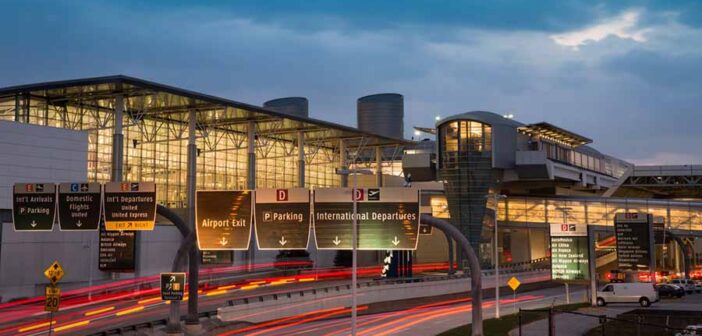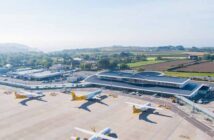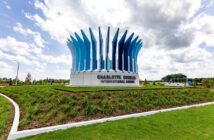Travelers pulling up to Houston George Bush Intercontinental Airport step into one of five terminals labeled A through E, each handling a mix of domestic and international flights to 187 destinations with United Airlines running most operations as its major hub.
Terminal A focuses on regional hops and United Express, B takes international arrivals with customs in its south wing, C splits into north and south sections for United’s main gates, D serves other carriers like American and Delta, and E manages international departures and some United wide-bodies.
Passengers transfer between terminals using the free Skyway train that loops every two minutes on elevated tracks, covering the distance in five to 10 minutes, or the underground Subway for baggage-checked folks in under three minutes.
The layout spreads across a 10,000-acre site with wide halls and clear overhead signs in English and Spanish, where walking times between gates in a single terminal run 10 to 15 minutes, and the whole setup processes over 48 million passengers yearly through five runways that keep things moving.
The airport sits 23 miles north of downtown Houston off Interstate 69 along Will Clayton Parkway, a 30- to 45-minute drive in moderate traffic through suburbs and past the Greenspoint area. METRO’s Route 102 Bush IAH Express bus links downtown to Terminal C’s south side every 15 minutes on weekdays for 1.25 dollars exact change, taking 50 to 90 minutes with free Wi-Fi onboard, while the new Route 500 runs nonstop direct service in about 40 minutes for the same fare.
Rideshares drop off on the departures curbs, taxis queue at stands outside each terminal for 50 dollars to the city center, and shuttles to hotels or Hobby Airport operate from dedicated bays with 24-hour availability. Rental cars from Hertz and Enterprise pick up in the consolidated facility connected by a short tram ride, and parking garages attach directly to terminals A and B with daily rates at 26 dollars, economy lots farther out at 9 dollars that fill during peaks but offer app-based reservations.
Security lines advance at 12 checkpoints open from 3:30 a.m. to 9 p.m., where TSA PreCheck and CLEAR cut waits to under 10 minutes on average, though early mornings or holidays can stretch that to 30 minutes with extra bag scans. Connections flow well for hub users with 40-minute minimums on domestic legs via the Skyway, giving time to hit a gate lounge or stretch before the next call, while international arrivals clear customs in Terminal B or E in 30 to 60 minutes depending on crowds before heading to recheck or onward trains.
On-time departures land at about 80 percent from monthly carrier reports, backed by 1,300 daily flights across those runways, but Gulf Coast thunderstorms in summer often spark 45-minute ground stops, and Terminal B construction phases can slow Skyway boardings or add gate swaps. The Fly2Houston app tracks those shifts with push notifications for weather holds or crew timeouts.
Dining spans over 100 spots across the terminals, from quick-service like Starbucks open at 4 a.m. in A and C to sit-down options such as Pappadeaux Seafood Kitchen in Terminal D for Gulf shrimp or El Tiempo Taqueria in E with fresh tortillas running 11 a.m. to 9 p.m. Retail lines the concourses with Hudson News for snacks and papers from 5 a.m., duty-free in Terminals B and E stocked with Texas whiskeys and perfumes for international flyers, and shops like Johnston & Murphy for bags or iStore for gadgets near central hubs.
Facilities include free Wi-Fi in all areas, charging stations clustered at every gate cluster, pet relief zones airside with turf patches in each terminal, and nursing suites post-security with privacy locks. Lounges such as United Club in Terminals B and E provide showers and workspaces for members, meditation rooms sit quietly in C, and accessible shuttles with ramps cover the grounds. The terminals stay active with info desks staffed from first light, putting tools in hand for steady progress through the day.




